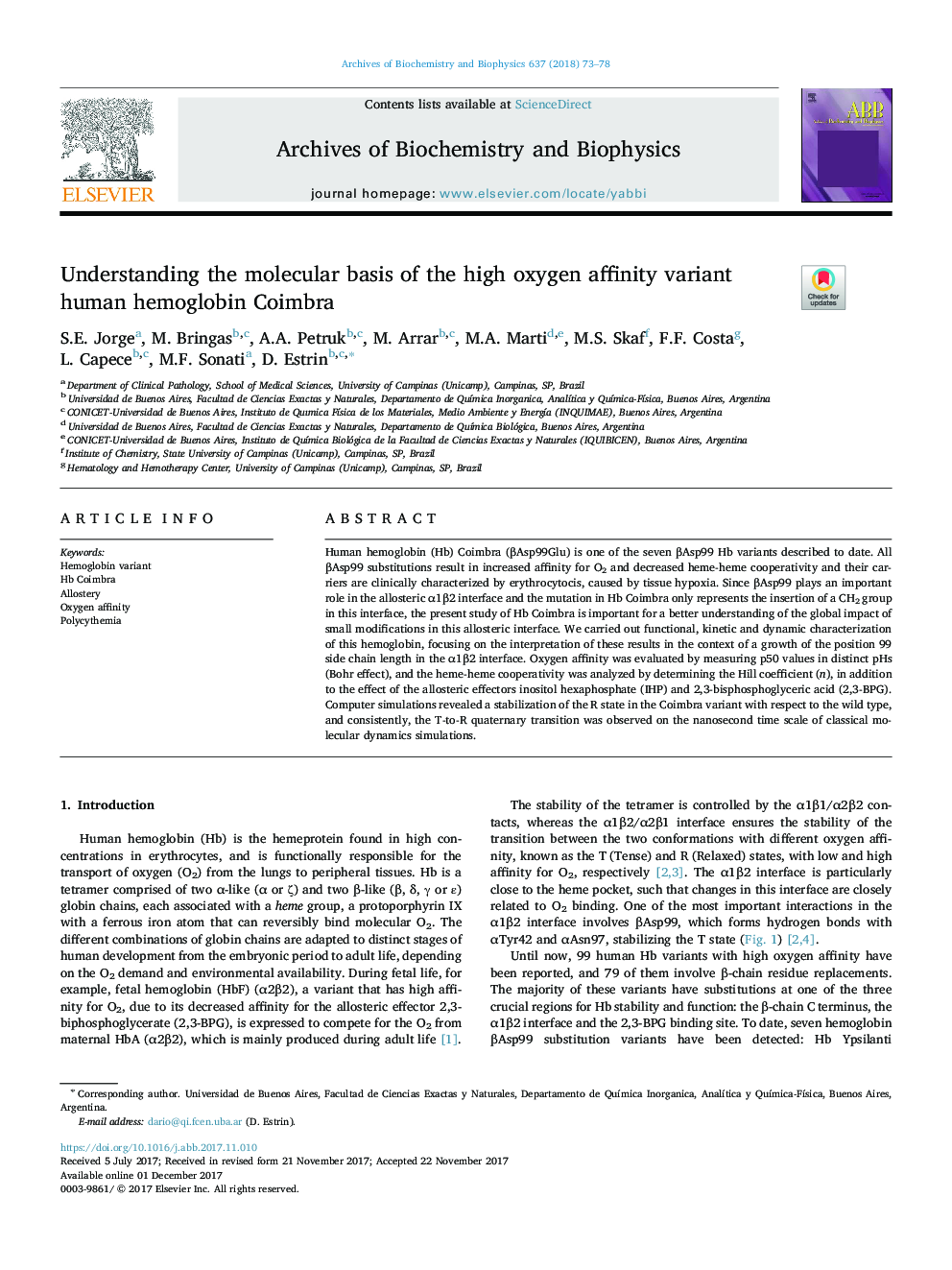| کد مقاله | کد نشریه | سال انتشار | مقاله انگلیسی | نسخه تمام متن |
|---|---|---|---|---|
| 8288854 | 1536268 | 2018 | 6 صفحه PDF | دانلود رایگان |
عنوان انگلیسی مقاله ISI
Understanding the molecular basis of the high oxygen affinity variant human hemoglobin Coimbra
ترجمه فارسی عنوان
درک مبنای مولکولی کیمبرای هموگلوبین انسانی باکتریایی بالا
دانلود مقاله + سفارش ترجمه
دانلود مقاله ISI انگلیسی
رایگان برای ایرانیان
کلمات کلیدی
نوع هموگلوبین، هاب کویمبرا، آلوستری، وابستگی اکسیژن، پلی سیتمی،
موضوعات مرتبط
علوم زیستی و بیوفناوری
بیوشیمی، ژنتیک و زیست شناسی مولکولی
زیست شیمی
چکیده انگلیسی
Human hemoglobin (Hb) Coimbra (βAsp99Glu) is one of the seven βAsp99 Hb variants described to date. All βAsp99 substitutions result in increased affinity for O2 and decreased heme-heme cooperativity and their carriers are clinically characterized by erythrocytocis, caused by tissue hypoxia. Since βAsp99 plays an important role in the allosteric α1β2 interface and the mutation in Hb Coimbra only represents the insertion of a CH2 group in this interface, the present study of Hb Coimbra is important for a better understanding of the global impact of small modifications in this allosteric interface. We carried out functional, kinetic and dynamic characterization of this hemoglobin, focusing on the interpretation of these results in the context of a growth of the position 99 side chain length in the α1β2 interface. Oxygen affinity was evaluated by measuring p50 values in distinct pHs (Bohr effect), and the heme-heme cooperativity was analyzed by determining the Hill coefficient (n), in addition to the effect of the allosteric effectors inositol hexaphosphate (IHP) and 2,3-bisphosphoglyceric acid (2,3-BPG). Computer simulations revealed a stabilization of the R state in the Coimbra variant with respect to the wild type, and consistently, the T-to-R quaternary transition was observed on the nanosecond time scale of classical molecular dynamics simulations.
ناشر
Database: Elsevier - ScienceDirect (ساینس دایرکت)
Journal: Archives of Biochemistry and Biophysics - Volume 637, 1 January 2018, Pages 73-78
Journal: Archives of Biochemistry and Biophysics - Volume 637, 1 January 2018, Pages 73-78
نویسندگان
S.E. Jorge, M. Bringas, A.A. Petruk, M. Arrar, M.A. Marti, M.S. Skaf, F.F. Costa, L. Capece, M.F. Sonati, D. Estrin,
